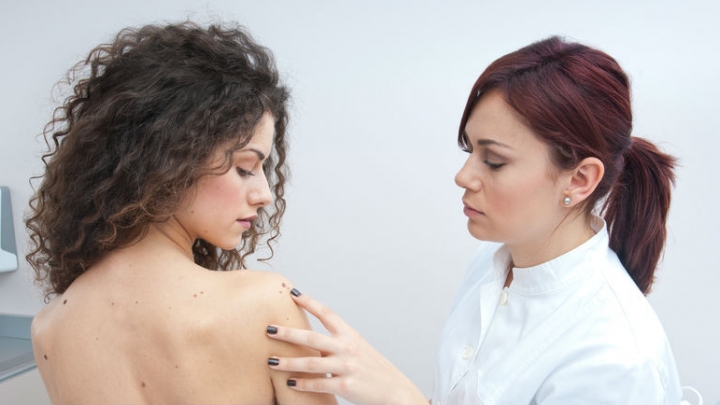Some adults can have up to 40 moles. But when should you start worrying about skin cancer?
Although it is relatively rare, a common mole can turn into melanoma — the most serious type of skin cancer. Here's what you need to know.
A Common Mole's Appearance
A mole is typically smaller than 5 millimeters wide. In addition, a mole is typically round or oval in shape. A mole will usually have a smooth surface and distinct edge. The color of a mole will typically be an even pink, brown or tan. You will typically find moles on areas of your body that are exposed to the sun.
If you notice any changes in any of your moles, speak to your health care provider. Some changes to look for include the following:
- Change in color
- Change in size, in which the mole becomes uneven
- Change in shape
- Change in texture
- Change in height
- Surface becomes dry or scaly
- Mole becomes hard or lumpy
- Mole starts to itch
- Mole begins to bleed or ooze
Melanoma's Appearance
These characteristics are particularly important because of the characteristics of melanoma. Follow the "ABCDE" rule to detect early melanoma.
- Asymmetry. Check to see if the shape is not symmetrical (one half of the mole should match the other half of the mole).
- Border that is irregular. With melanoma, you may see an edge that is ragged or blurred when compared to a distinct edge seen with a common mole. In addition, with melanoma, your may notice the color spreading onto your surrounding skin.
- Color that is uneven. You may notice shades of black, brown and tan. You may even see gray, red, pink, white or blue in some areas.
- Diameter. You may notice an increase in the size of the mole. Although melanomas can be tiny, most of them will be larger than 6 millimeters wide.
- Evolving. You may notice the mole has changed over a period of time (past few weeks or months).
Furthermore, melanoma's texture may appear hard or lumpy and may even begin to bleed or ooze.
Many melanomas show all of the "ABCDE" characteristics, but they do not have to. Some melanomas will only show one or two of the characteristics outlined.
How Can I Check My Skin for Cancer?
Check your skin regularly for changes in moles or for a new colored area. When you check your skin often, you will familiarize yourself with what is normal.
Experts recommend checking your skin after you shower or bathe.
When checking your skin, make sure to check from head to toe; your face, neck, ears and scalp; your backside (pay attention your legs, butt and genital area); fingernails and toenails; your palms and soles of your feet; and in between your toes.
In addition to your self-checks, your health care provider may also want to check you. The frequency will depend on your individual chance for developing skin cancer.
If you have any questions about moles or skin cancer, be sure to ask your doctor.








